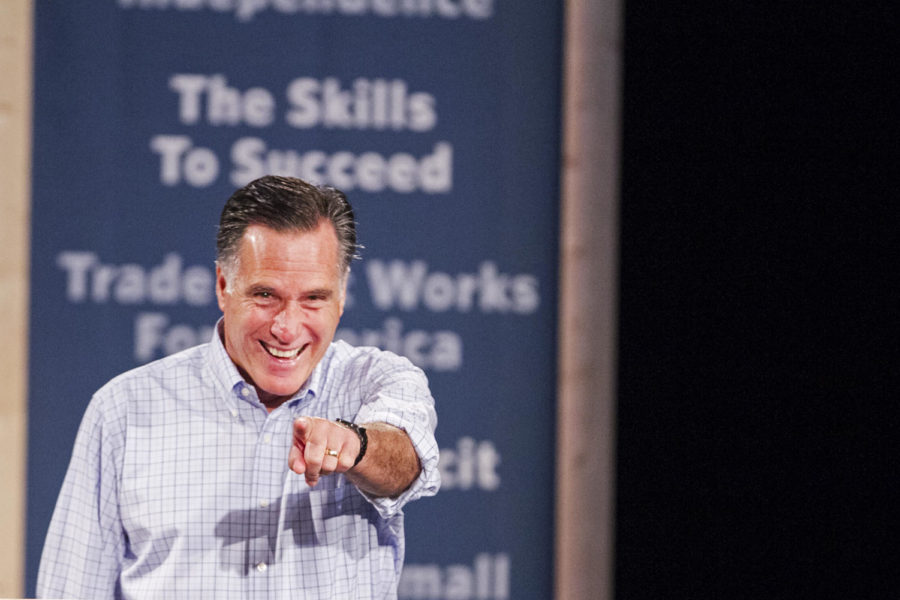College officials explain how election might affect Pell Grants
Photo: Kelsey Kremer/Iowa State Daily
Presidential hopeful Mitt Romney waves to a half-full Central Campus auditorium the morning of Wednesday, Aug. 8, in the Central Campus auditorium in Des Moines. More than 400 people attended the event.
September 27, 2012
On Nov. 6, Americans will have the opportunity to vote for whom they think should run the country. Before students vote, however, they will want to make sure they know how the two main candidate’s policies will affect them.
The major issue that could affect students is the federal Pell Grant program, which is “the cornerstone of financing higher education,” said Roberta Johnson, director of financial aid at Iowa State. Helping more than 5 million students, the Pell Grants are a necessity for students who cannot pay for college themselves.
“[Barack] Obama’s been working to try to make sure the federal Pell Grant program stays sustainable,” Johnson said. “Part of the challenge with that is that we’ve come off of some pretty bleak economic times, so many more students have qualified for the federal Pell Grant program than have previously qualified.”
Obama supports increasing the maximum rate for the Pell Grant. Currently at $5,550, the new max would be $5,635. He also changed the lending type used for the grants — shifting from a half-government, half-bank lending system to one that depends on government funding entirely.
“With the move to 100 percent lending, [the idea] was that instead of sending subsidies to lending institutions, they should use that money to shore up the federal Pell Grant program,” Johnson said.
Mitt Romney’s campaign, on the other hand, wants to cut back the program. They say reducing government spending and paying off the national debt of more than $16 trillion would be of more benefit to the country.
“On a nationwide basis, we are looking at a 100 percent direct lending, which is something that Romney has indicated that he would change,” Johnson said. “He indicates that he would go back to a bank-based student loan program.”
When it comes to Pell Grant funding, however, it is unclear what the Romney campaign supports.
“Paul Ryan, on the Pell Grant program, recommends in his budget to reduce the funding … which, in effect, could potentially lower that maximum amount below the $5,550 that it is now,” Johnson said. “[Romney] actually indicated that he did not support Paul Ryan’s recommendations on the Pell Grant program, so that makes it a little difficult to discern where Romney would fall on the issue.”
Knowing each party’s basic stance on economic issues might be more helpful for students.
“Republicans favor a personal responsibility approach to things like paying for education,” said Mack Shelley, university professor of political science. “So just as a general premise, the Romney campaign isn’t going to be as interested in keeping tuition costs down as much as they will be in trying to privatizing the cost of education, to try to reduce state expenditures or federal expenditures to support students. … The Romney campaign pretty much is all driven by making things better for business and … economics that will work with everyone else’s life, so they’ve got a different take on things.
“From a Democratic perspective, there would be more of a focus on opportunities for education, and that doesn’t seem to be the No. 1 goal for the Republicans,” Shelley said.
Both parties, however, might push aside higher education when faced with a problem in K-12 education.
“When push comes to shove, the average Democrat will say: ‘Let’s spend money to solve the problem.’ Republicans would say something like: ‘Let’s get rid of programs, diminish the effect,’” Shelley said.

















